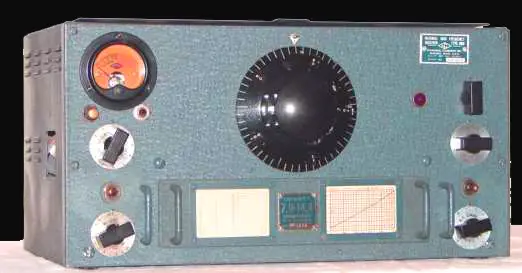Researching the world of radio communication can be tricky. What’s the difference between shortwave and ham radio? No need to fear! This article explains it all.
Shortwave radio uses high frequencies, which can reach far-off locations. It bounces off the ionosphere, so it’s used for international broadcasting. Governments and news organizations use it to send messages around the world.
Ham radio is also known as amateur radio. It’s a hobby for people across the world. Ham radio users have designated frequencies to communicate with each other. They can experiment with different antennas to strengthen their signal.
To get the most out of your radio adventure, try the following:
- Learn the Rules: Get to know the rules and regulations of radio communication in your area. This will help you stay on the straight and narrow.
- Join a Community: Connect with experienced operators through local clubs or online forums. You’ll get valuable tips and expand your network.
- Learn Morse Code: Although it’s not required for most ham licenses anymore, Morse code can help you communicate better with hams worldwide.
- Experiment with Antennas: The antenna is vital to performance. Try different types to find the one that serves your needs best.
You’re ready to go! Whether you like Shortwave or Ham, both offer unique opportunities to connect with people across the globe. So, grab your equipment and get communicating!
Overview of Shortwave Radio
To better understand shortwave radio and make an informed decision on whether it suits your needs, dive into an overview of its workings, advantages, and disadvantages. Discover how shortwave radio operates, explore its benefits, and consider its drawbacks.
How Shortwave radio works
Shortwave radio is a special tool that transmits and receives radio signals over far-reaching distances. High-frequency bands, like 1.6-30 MHz, can be refracted off the Earth’s ionosphere and back to the ground. This allows communication across vast areas, and even beyond geographical barriers.
In WWII, German spies used this technology to transmit secret messages back home. By changing the frequency quickly or disguising them as innocent broadcasts, they were difficult to detect. But intelligence agencies were able to intercept and decipher some.
Today, shortwave radio still captivates people worldwide. Its ability to traverse long distances with minimal infrastructure makes it a reliable form of communication for industries and individuals beyond borders.
Advantages of Shortwave radio
Shortwave radio has various benefits, making it a favourite among users. Here are the main advantages:
- Wide Coverage: Shortwave radio signals can go far, allowing global communication even in isolated places. This is perfect for emergencies or when traditional communication isn’t possible.
- Cost-effective: Unlike other communication forms, shortwave radio does not need expensive infrastructure or subscriptions. Once you have the equipment, you can hear different stations without any extra charge.
- Resilience: Shortwave radio is known for its resistance to natural disasters and disruptions. Even during power outages or internet issues, shortwave radios still work.
- Versatility: With shortwave radio, you can access content from around the world. From news, music, and educational programs, to cultural broadcasts, there’s something for everyone.
- Security: Shortwave radio is often utilized by governments, military organizations, and diplomatic services due to its secure nature. Unlike internet-based communication, it’s hard to intercept and decode shortwave radio transmissions.
On top of these benefits, shortwave radio also offers special features such as transmitting encrypted messages or broadcasting anonymous communications. This makes it a great tool for those seeking privacy or having private conversations.
Pro Tip: To get the best out of shortwave radio, invest in a good antenna system. A high-quality antenna can enhance signal reception and overall performance.
Disadvantages of Shortwave radio
Shortwave radio has its drawbacks, which can influence its effectiveness and usability. These include:
- 1. Limited range – shortwave signals can only go far distances in certain weather conditions, meaning they can be inconsistent in certain places.
- 2. Interference – Shortwave frequencies can be hindered by other electronic devices, like power lines or radios, which can lower the quality of the signal.
- 3. Fading – This is often an issue with shortwave radio because of changes in the Earth’s ionosphere, which can cause short breaks in reception.
- 4. Noise – This type of radio often has background noise, like static or atmospheric disturbances, making it hard to listen to weaker signals.
- 5. Equipment limits – Receivers of high quality can cost a lot and need complex setups with external antennas for best performance.
However, it is still a helpful form of communication for some applications. Governments and organizations have used it for years for long-distance communication. It is especially useful during emergencies or natural disasters since it can reach remote areas where other communication methods don’t work.
To make your shortwave listening experience better, try investing in a good external antenna. This can increase signal reception and reduce interference.
Overview of Ham radio
To gain a comprehensive understanding of Ham radio, and its distinct features including how Ham radio works, the advantages it offers, and its disadvantages, we dive into an overview of Ham radio. This section provides valuable insights into the subject, equipping you with the necessary knowledge to make informed decisions regarding this form of communication.
How Ham radio works
Ham radio is a fascinating communication system used worldwide by amateur radio operators. It works on various frequencies, allowing people to send and receive messages over long distances using radio waves. Antennas are used to convert electrical signals into electromagnetic waves, which can bounce off the Earth’s ionosphere and reach faraway places.
With ham radios, operators can contact other enthusiasts, help during disasters, or even do international broadcasting. To transmit a signal, operators modulate their voice or data onto a carrier frequency inside authorized amateur bands. This ensures the signal is distinguished from others.
Ham radios are special because they don’t need traditional communication infrastructure. In times of crisis, they become an essential tool for exchanging info and coordinating rescue efforts. Amazingly, they also allow global communication without the internet or satellites! Propagation of signals over long distances is made possible by natural phenomena like ionospheric reflection and refraction.
Ham radio has a long history, starting in the late 19th century with Guglielmo Marconi’s experiments in wireless telegraphy. His success led to today’s modern communications systems and amateur radio (Source: ARRL – American Radio Relay League).
Advantages of Ham radio
Ham radio, also known as amateur radio, has many advantages that make it a popular hobby. Here are some of its benefits:
- Communication: Ham radio operators can connect with people from all over the world using high-frequency electromagnetic waves. This allows for direct and personal connections with individuals from diverse cultures.
- Emergency Preparedness: Ham radios are important during emergencies when other communication channels fail. They have independent power sources and resilient infrastructure to provide support when needed.
- Technical Knowledge: Ham radio encourages the development of technical skills such as understanding circuitry, antenna design, and signal propagation. It also provides opportunities to learn about electronics, RF engineering, and wireless technology.
- Community Engagement: Ham radio brings together a community of like-minded individuals who share a passion for exploration, communication, and public service. Operators can join local clubs or even assist in disaster relief.
In addition, ham radio offers unique benefits not found elsewhere. It allows experiments with equipment, antennas, and frequency bands to optimize signal transmission.
Ham radio made an impact during World War II. Amateur operators intercepted enemy transmissions and established communication networks on the home front. This helped military operations and ensured secure communication channels amidst conflict.
To conclude, ham radio has many advantages including global reach, emergency preparedness, technical skill development, and active community engagement. Its history also shows its importance as a reliable form of communication in both ordinary and extraordinary times.
Disadvantages of Ham radio
Ham radio is a popular hobby for many, but it has its drawbacks. Limited range, interference, and complexity are some of the issues faced by operators.
- The range of communication is limited with ham radios due to lower power output and reliance on atmospheric conditions.
- External signals and noises can disrupt communication, coming from sources such as electrical appliances, power lines, and other radio signals.
- Operating a ham radio requires technical knowledge and skill. It may take time and effort to learn the necessary procedures and protocols.
Though there are challenges, there are ways to reduce them:
- Repeaters can extend the range of communication.
- Filters and shielding techniques help reduce interference.
- Continuous learning and practice help overcome complexity.
Despite the disadvantages, ham radio offers plenty of benefits. Emergency communications in remote areas or during disasters are possible.
Differences between Shortwave and Ham radio
To understand the differences between shortwave and ham radio, delve into the frequency ranges, licensing and regulations, equipment and setup, and communication capabilities. Each sub-section offers unique insights into how these two forms of radio communication vary, providing a comprehensive comparison between shortwave and ham radio.
Frequency ranges
To give you a good picture, here’s a table with the frequency ranges for Shortwave and Ham radio:
| Frequency Range | Band Name |
|---|---|
| 1.8 – 30 MHz | HF Band |
| 13 – 14 MHz | HF Band |
| 15 – 17 MHz | HF Band |
| 21 – 29.7 MHz | HF Band |
Ham Radio:
| Frequency Range | Band Name |
|---|---|
| 160 – 190 KHz | LF Band |
| 1.8 – 2 MHz | LF Band |
| 3.5 – 4 MHz | MF Band |
| 7 – 7.3 MHz | MF Band |
| 144 – 148 MHz | VHF band |
Shortwave and Ham radios both use the High-Frequency (HF) band, but they have special frequency ranges too. Ham radios go as low as the Low-Frequency (LF) band, while Shortwave radios cover a wider area in the HF band.
Knowing these frequency ranges is important when selecting the right radio. Do you need to communicate far or near? Do you want long-distance broadcasting or high-quality audio transmission?
Here are some tips based on the frequencies:
- For global communication: Go for a Shortwave radio in the HF band, so signals can travel far.
- For local communication: Get a Ham radio in the VHF band, since it’s good for shorter distances.
- For accurate control and stability: Make sure your Shortwave and Ham radios have accurate tuning, for clear and uninterrupted communication.
Knowing the frequency range of each radio and picking one that suits your needs will give you the best experience. Whether you’re after global reach or local connections, the right radio will help you reach your goals quickly and easily.
Licensing and regulations
To use shortwave and ham radio legally, people must obtain the correct licenses and observe the rules set by governing bodies. This guarantees responsible and effective use of the airwaves.
Let’s look at a table with some key differences between the two:
| Aspect | Shortwave Radio | Ham Radio |
| Licensing Requirement | A general operator license is needed. | Amateur radio licenses are split into classes like Technician, General, Advanced, and Extra. |
| Frequency Allocations | Frequencies are assigned by international organizations like the International Telecommunication Union (ITU) for global broadcasting. | Hams have frequency ranges across different bands for communication. |
| Transmitting Power Limitations | No power limitations for shortwave radios. | Hams have predetermined power limits based on their license class. |
Plus, it’s worth noting that shortwave radio broadcasts can be heard by anyone with the right gear, while ham radio is limited to licensed operators.
Now, here’s an interesting fact. Shortwave radio is mainly used by international broadcasters to reach people worldwide, whereas ham radio focuses on two-way communication between operators. This is evident in their licenses and frequencies.
Ham radio has a long history. Going back to the early 1900s, ham operators contributed a lot to telecom technology development. Their enthusiasm for radio communication led to advances in wireless networks that still shape the world today.
As a conclusion, licenses and regulations are critical in both shortwave and ham radio operations. This ensures spectrum management and responsible communication. Knowing these necessities allows people to explore radio communication without worries.
Equipment and setup
Shortwave and Ham radios have some unique characteristics. Here’s a closer look at the differences.
Shortwave radio offers a wide frequency range, making it easy for beginners to use. Plus, it allows access to various stations from around the world.
Ham radio, on the other hand, has a narrow frequency range. But it allows interactive communication between operators.
Shortwave is great for broadcasting information to many receivers. Whereas, ham radio is good for personal conversations and emergency communication.
So, when deciding which one to choose, think about your needs. Shortwave is perfect for global access to broadcasts. And ham radio is great for direct talks with others in the network.
Communication capabilities
Shortwave and ham radio have distinct communication abilities that set them apart. Shortwave radio transmits signals over long distances, making it good for worldwide communication. Whereas, ham radio – aka amateur radio – is two-way communication among licensed operators and a platform for experimentation and emergency communication.
Let’s look at their communication abilities in a table:
| Shortwave Radio | Ham Radio |
|---|---|
| Global reach | Local & global reach |
| Long-distance transmission | Two-way communication |
| Uses multiple frequency bands | Uses specific amateur bands set by regulations |
| Enables listening to broadcasts from around the world | Offers a network of fellow radio enthusiasts for conversations |
| Wartime news & propaganda broadcasting tool | Hobby or emergency preparedness tool |
Shortwave radio is great for worldwide communication. Ham radio enables localized two-way conversations, plus conversations with fellow enthusiasts, or essential communication during emergencies.
Pro Tip: A ham radio license is needed. Passing exams on technical knowledge & operating procedures can improve your ham radio experience.
Similarities between Shortwave and Ham radio
To understand the similarities between Shortwave and Ham radio, delve into the world of radio wave propagation, communication purposes, and global reach. Discover how these elements connect both radio technologies and enable their effectiveness in transmitting signals over vast distances.
Radio wave propagation
Shortwave Radio and Ham Radio both rely on radio wave propagation for efficient communication. Shortwave Radio has a frequency range of 1.6 – 30MHz, enabling transmissions up to thousands of kilometres. Ham Radio, however, utilizes negligible ionosphere utilization and various antenna types, such as dipole, yagi, vertical, and loop antennas.
The concept of radio wave propagation dates back to the late 19th century with the experiments of Heinrich Hertz. His work led to the development of wireless communication systems.
Atmospheric conditions, electromagnetic interference, solar activity, and topography can affect the quality and range of both Shortwave Radio and Ham Radio transmissions. Yet, radio wave propagation remains an enduring legacy in the realm of wireless communication. Technological advancements continue to shape the field, allowing for convenient communication between shortwave and ham radio enthusiasts.
Communication purposes
Shortwave and ham radio are vital in times of disaster or emergency when traditional communication fails. They offer important info for aid organizations and people affected. Plus, they can broadcast worldwide, providing news, entertainment, education and cultural exchange. Amateur radio also allows users to converse, experiment and take part in events or contests.
These radios are beneficial in extreme weather when other methods can be blocked. Also, they are easy to use, even in faraway places or with limited resources. To make the most of them, follow these tips:
- Place antennas well, for strong signal and good reception.
- Research the best frequencies for your target.
- Stick to protocols, like language codes & avoiding interference.
By doing this, transmissions will be clearer. And shortwave and ham radio can provide communication across diverse regions.
Global reach
Shortwave and Ham radio boast incredible global reach. It connects people from all corners of the world. Here’s a look at what makes this possible:
- Distance: Shortwave signals can travel thousands of miles, bouncing off the Earth’s ionosphere. Ham radio operators use long-distance propagation to communicate with those in distant countries.
- Frequency Range: Shortwave typically operates 1.6 to 30 MHz, while Ham radios access multiple frequency bands.
- Signal Strength: Both radios utilize high-power transmitters to maximize signal strength for long-distance transmission.
- Multiple Modes: Both offer various operating modes, e.g. SSB, CW, and Digital modes.
To make the most of global reach, here are some tips:
- Antenna Height: Increasing antenna height amplifies signals, improving long-distance connectivity.
- Power Management: Efficiently managing power consumption extends battery life.
- Propagation Research: Studying propagation characteristics helps select optimal frequencies.
- Network Connections: Utilizing networks like IARU boosts global reach.
By following these suggestions, users will optimize their Global reach capabilities, bridging gaps between continents and fostering international connections, while making the most of Shortwave and Ham radios.
Conclusion
Shortwave and ham radio both have unique benefits. Shortwave radio is great for long-distance communication while ham radio is ideal for experimenting and connecting with people.
Shortwave radio doesn’t need infrastructure or equipment to send signals far away. This makes it a valuable tool in emergencies or isolated areas.
Ham radio, also known as amateur radio, provides opportunities for exploration and connecting with others. People can join contests, and clubs, and help with disaster relief.
It comes down to preference and purpose. For long-range coverage and dependability in emergencies, shortwave is better. But, if you like tinkering and engaging in communities, ham radio is a great choice.
Pro Tip: Try both! You’ll have a wide range of options for any communication needs.
Frequently Asked Questions
1. What is the difference between Shortwave and Ham Radio?
Shortwave radio refers to the use of specific frequency bands for long-distance communication, while Ham Radio (or amateur radio) is a licensed and regulated hobby that allows individuals to communicate over a wide range of frequencies.
2. Can anyone use Shortwave radio?
Yes, anyone can listen to shortwave radio broadcasts. However, transmitting on shortwave frequencies requires a license from the regulatory authority of your country.
3. Who can use Ham Radio?
Ham Radio operators or amateurs who have obtained an amateur radio license can use Ham Radio. Licensing requirements vary by country but generally involve passing an examination.
4. What are the advantages of Shortwave radio?
A shortwave radio can potentially reach a global audience due to its long-range transmission capabilities. It is often used for international broadcasting, emergency communication, and monitoring world events.
5. What are the advantages of Ham Radio?
Ham Radio offers greater flexibility in terms of frequency bands and modes of communication. It provides a platform for experimentation, emergency communication during disasters, participation in contests, and connecting with fellow amateur radio operators worldwide.
6. Can Shortwave and Ham Radio be used interchangeably?
No, Shortwave and Ham Radio are different in terms of purpose, licensing requirements, and frequency flexibility. While Shortwave radio is primarily for broadcasting, Ham Radio is a hobby that enables licensed operators to communicate with other amateurs.




